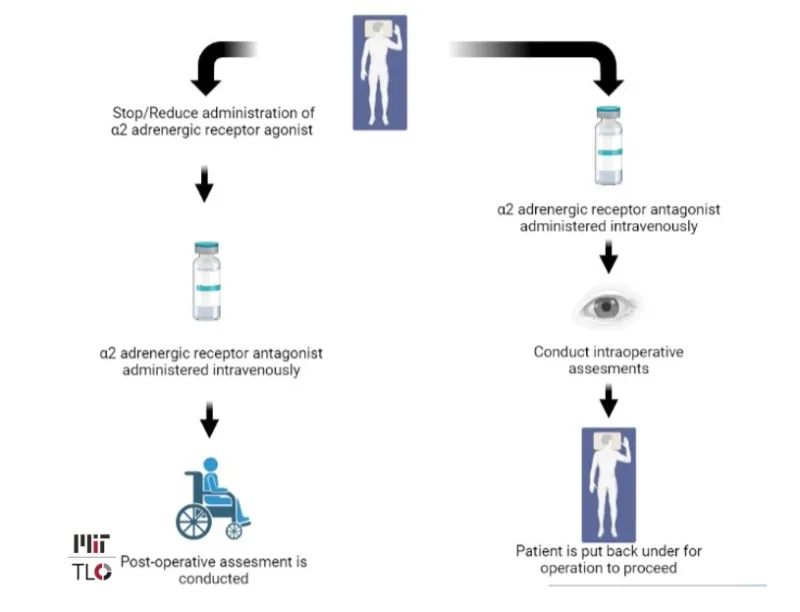Methods for Evaluating Treatments and Physiology in Human Patients using Intravenous Alpha-2 Adrenergic Antagonist Agents
This technology proposes methods for the intra-operative monitoring of patients by providing an agent to reverse the effects of general anesthesia and sedatives. This technology is relevant to:
-
Outpatient anesthesia facilities in which patient speech, motor, and cognitive functions are assessed before patient release.
-
Surgery operations, such as neurosurgery or spinal surgery.
Researchers
-
methods for evaluating treatments and physiology in human patients using intravenous alpha-2 adrenergic antagonist agents
Patent Cooperation Treaty | Published application
Figures
Applications
This invention involves rapidly reversing, either partially or wholly, effects of general anesthesia agents known as α2 adrenergic receptor agonists via intravenous administration of an adrenergic receptor antagonist, such as atipamezole. This technology is based on the discovery that adrenergic receptor antagonists can induce rapid reversal of unconsciousness in humans. There are currently no other known agents to reverse the effects of anesthesia and/or sedatives. The adrenergic receptor antagonist may be administered in conjunction with the administration of general anesthesia, or after its cessation. For example, the adrenergic receptor antagonist can be used to only temporarily reverse the effects of general anesthesia such that a clinician has enough time to perform an intraoperative assessment of the patient before proceeding with the operation, which can improve patient outcomes.
Problem Addressed
Regaining consciousness after the use of general anesthesia and/or sedatives is often a lengthy process. Due to the lack of agents to reverse anesthesia induced unconsciousness, clinicians usually wait until the effects of general anesthesia have waned to assess a patient’s neurological and motor functions. Waiting to assess the patient until after an operation can mean less feedback on how surgical technique has impacted the patient, as well as the ability to identify surgical errors.
Advantages
-
Spotting surgical errors in mid-operation or shortly post operation can reduce the number of secondary operations.
-
Reducing the time patients spend in facilities recovering from anesthesia can reduce health care costs.
-
The technology can be used to respond to an emergency during surgery in which a patient needs to become conscious.
License this technology
Interested in this technology? Connect with our experienced licensing team to initiate the process.
Sign up for technology updates
Sign up now to receive the latest updates on cutting-edge technologies and innovations.
